Alba Iulia, in Romania’s Transylvania region, has a hilltop citadel where many historical eras come to life, dominated by two massive cathedrals with over 600 tumultuous years dividing them. But far from being stuck in the past, the city is a trailblazer in terms of renovating its assets and achieving recognition on the international stage.
In 2012 the municipality was named a European Destination of Excellence (EDEN) by the European Commission because of rehabilitation and conservation work inside the citadel. It was also the first city in Romania to appear in Unesco’s World Heritage magazine. The Vauban Alba Carolina Citadel (to give it its full name) received more than 70 million euros of rehabilitation investment in the last few years. In 2015, Alba Iulia became the first Romanian city to adopt a City Branding Manual meeting international standards. And in 2013, the municipality was awarded a Jury’s Special Mention from the tourism conservation association Europa Nostra.
The two big cathedrals are the main attractions within the citadel. The Roman Catholic cathedral is a piece of Romanesque heritage more than a millennium old. The Catholic cathedral was initially erected in 1246-1291, meaning it dates from a time when the city – known as Gyulafehervar in Hungarian – was included in the kingdom of Hungary. That kingdom took possession of the region in 1003 when King Stephen of Hungary defeated his uncle, the leader of the independent Transylvania, Duke Gyula. This city was Gyula’s ruling seat.
The Catholic cathedral is the home base for Romania’s only Catholic archbishop besides one in Bucharest. It has an appealing simplicity, with its tall, arch-shaped windows and square tower with a massive cross on top. The church contains the tomb of Transylvanian prince Janos Hunyadi. His burial here was part of the deal in which he provided funds for renovating and enlarging the building in the 15th century after Turkish invaders damaged it. Turks attacked it again in 1603, destroying one of its two towers, which accounts for its asymmetrical facade to this day.
The city became the seat of a sovereign Transylvania again from 1541 to 1690, which included the reign of Gabor Bethlen (1613-1629). A warlord, arts patron, and strong booster of his principality’s power, Bethlen presided over a cultural and educational golden age in the city. Transylvania’s first institute of higher education was founded here in 1622 and was originally named the Collegium Academicum. Today, it is still in the same building, on the northeast corner of a little park within the citadel, but it’s now called the First of December 1918 university – for reasons that will become clear later.
Transylvania is not only dear to Hungarian speakers. In 1599, Mihai Viteazul (Michael the Brave) briefly conquered the region and, for about a year, united it with two other principalities – Moldavia and Wallachia. Those three regions have a large ethnic Romanian population, and Mihai Viteazul remains a national hero for Romanians. Beside the Catholic cathedral you can see a statue of him, mounted on a horse and brandishing a mace. It was carved from bronze by the Romanian artist Oscar Han in 1968. The statue stands in front of the palace which he used during his one-year reign.
All of these buildings are contained within the walls and gates of the fortress, which in 2014 was awarded with First Prize at the European Structural Funding Gala, in the “welcoming guests” section. The fortress has also been named one of the seven wonders of Romania by a national newspaper. Recent events at the fortress that have drawn attention to the city included “The Great Appearance,” a gigantic poster created by the municipality with portraits of 1,400 residents, reflecting the love and appreciation between them and the city. Another was “The Giant Hug” in 2009, in which 10,000 people participated in the biggest human hug, as confirmed by Guinness World Records.
Though some kind of fortification had stood here since the Roman Empire, the 12 kilometers of walls that still stand today, in the shape of a seven-pointed star, date from 1715-1738. This was when Transylvania became part of the Habsburg empire. Alba Iulia became less politically significant, as the Habsburgs chose to rule the region from Sibiu. They did, however, devote a lot of effort to overhaulingthe walls of its citadel. A Habsburg military garrison was housed here, and in 1785 those soldiers put down a Romanian peasants’ revolt led by Horea, Closca and Crisan.
Visiting the fortress today, you can still see three of the original six highly ornamented, early Baroque gates. On the east side, the First Gate, a triple triumphal arch, features a two-headed Austrian eagle, as does the Third Gate, which is topped by a statue of Charles VI, the Habsburg emperor who ordered all this built. On the west side is the Fourth Gate, again with an Austrian eagle over its doorway, and carved with the banners of Charles VI. Between the First and Third Gates stands a 1937 monument honouring the peasant revolt’s leaders, who are depicted in a relief at the base of a 22-meter obelisk. On the other side of the monument, a big winged figure of Victory looks out over the city. Horea was executed by being broken on the wheel near the citadel walls.
The union of Transylvania with the rest of modern Romania, though finally ratified in the post-World War I treaties in 1920, was initially declared by Romanians themselves in 1918, right here in Alba Iulia. With the war turning against the Austro-Hungarian empire, thousands of ethnic Romanians gathered here and elected a unified assembly. So important was the union to Romanians that they gave their existing king a whole second coronation ceremony in the city, in 1922. Ferdinand had been Romania’s king since 1914.
You can revisit the 1918 proclamation by entering the beautiful neo-classical building to the west of the park within the citadel. It was built in 1898 and served for 20 years as an entertainment venue for Austro-Hungarian troops, but its upper floor boasts the marbled hall in which the unification was declared. It is now adorned with Romanian tricolors, murals of Romanian heroes, and wall plaques bearing the wording of the declaration. The desk where the proclamation was signed is painstakingly preserved.
All of which leads us to the other huge church in the citadel. With an imposing bell tower considerably taller than the Catholic cathedral, Alba Iulia’s Romanian Orthodox cathedral stands within its own colonnade. Built in 1921-1923, it is where Ferdinand was re-crowned, and features colorful icon-style frescos. They include a portrait of Mihai Viteazul in the vestibule alcove, and King Ferdinand and Queen Maria framing the doorway into the church’s main nave. Rousing services are held in this building at 6pm each day.
And now, some communist-era architecture. Look west from the Orthodox Cathedral and you will see a path leading through its graceful bell tower toward a grand concrete pavilion. This then flows naturally into a huge causeway named Bulevardul Transilvaniei that forms the spine of the western part of the city. Framed by high-rise concrete blocks, it extends all the way down to the western edge of the city.
But the real heart of urban Alba Iulia is the older area to the east of the citadel hill, centering around Strada Ardealului and Piata Iuliu Maniu. Stroll through the park here and stop at a cafe for a strong cup of black coffee. Stay at Hotel Parc or Hotel Transilvania and enjoy their comfortable accommodation and good restaurants, with traditional Romanian cuisine.
Written by David Hill for EuropeUpClose.com

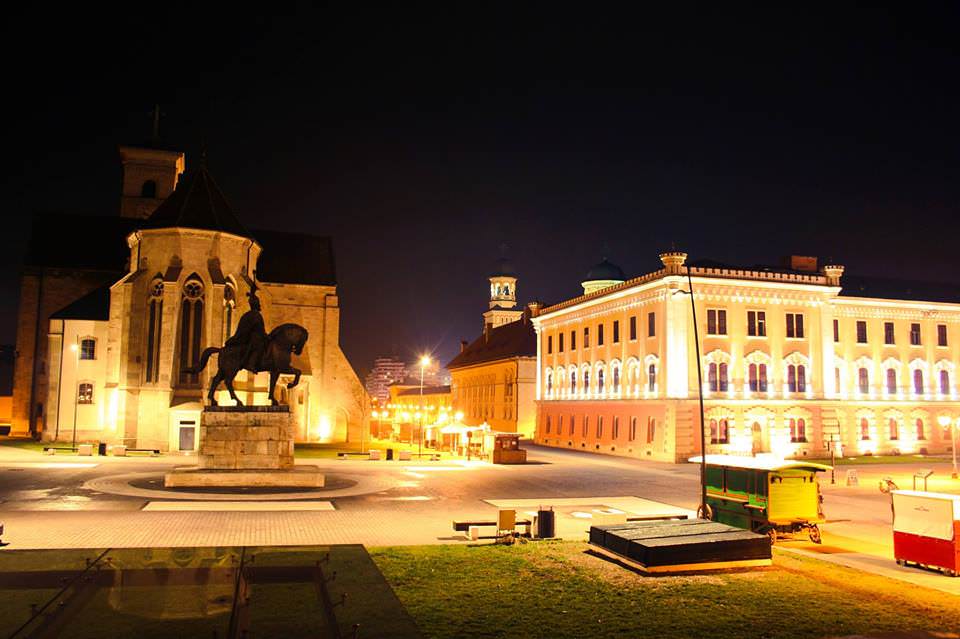
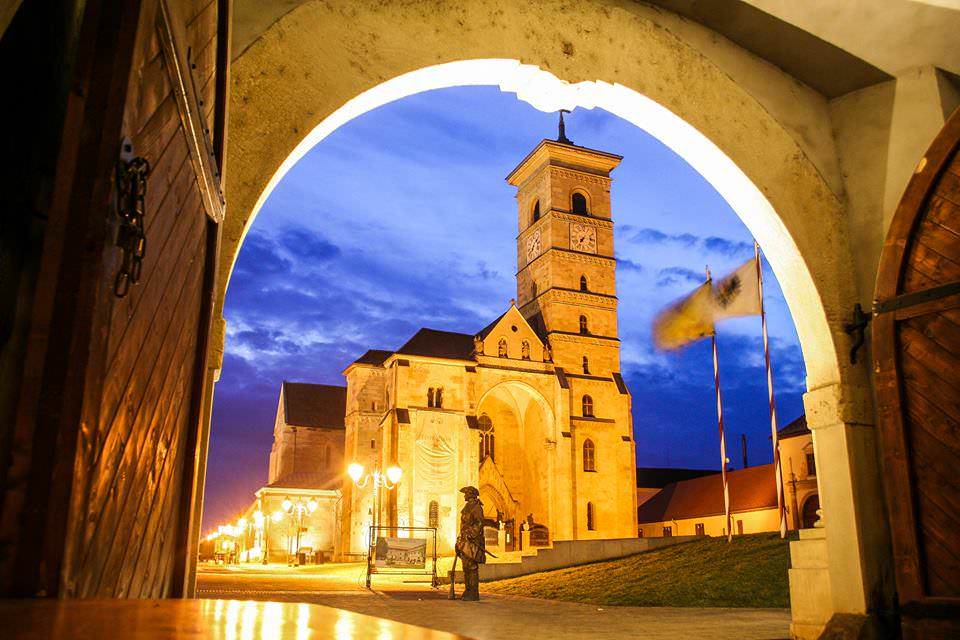
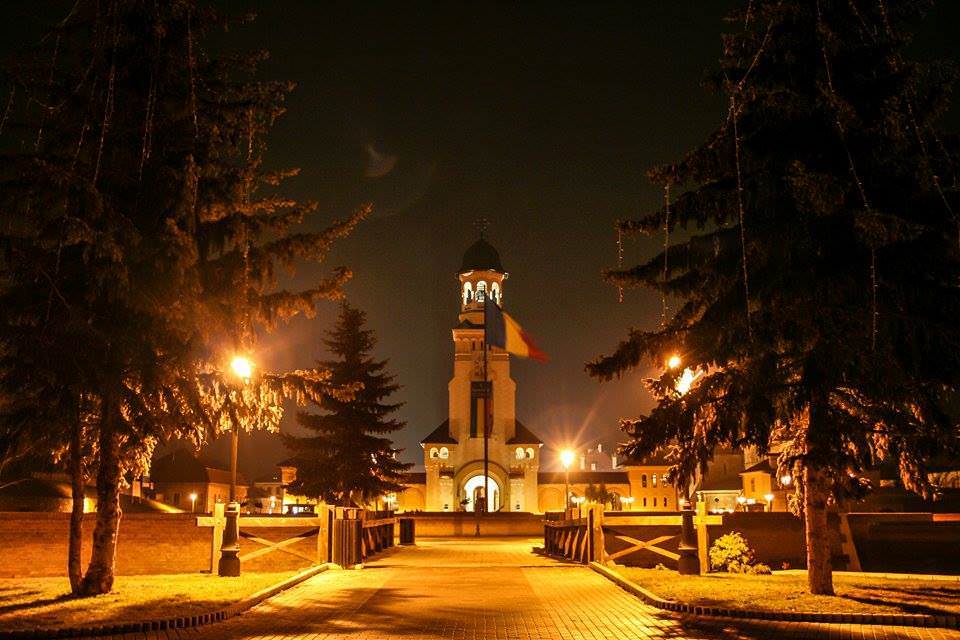
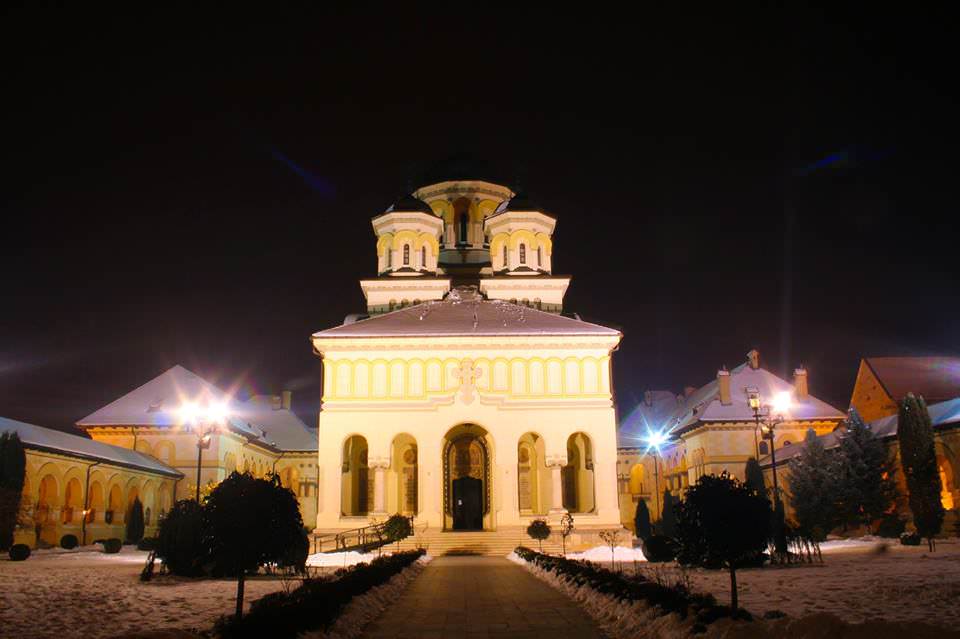

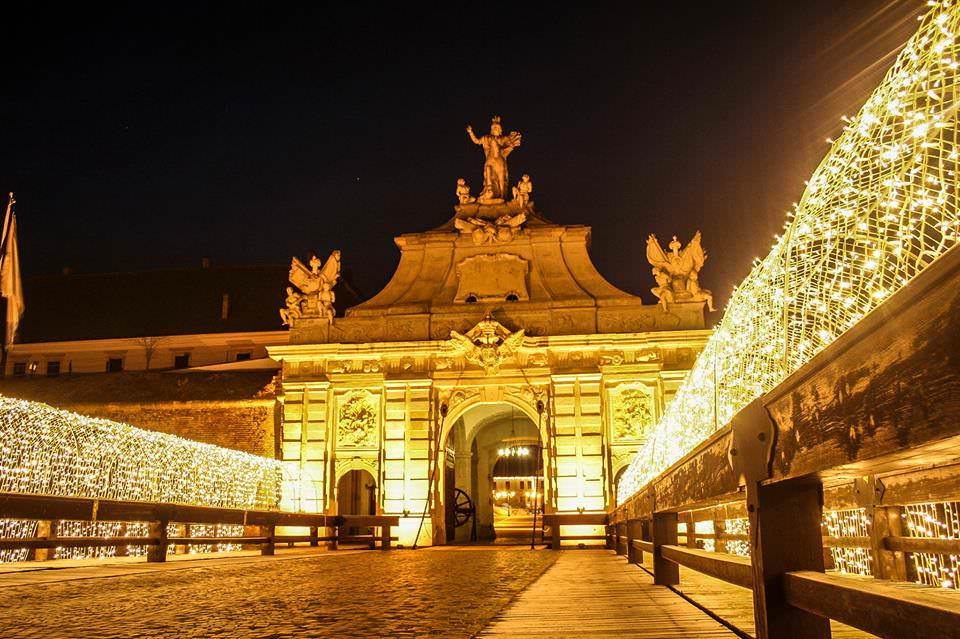
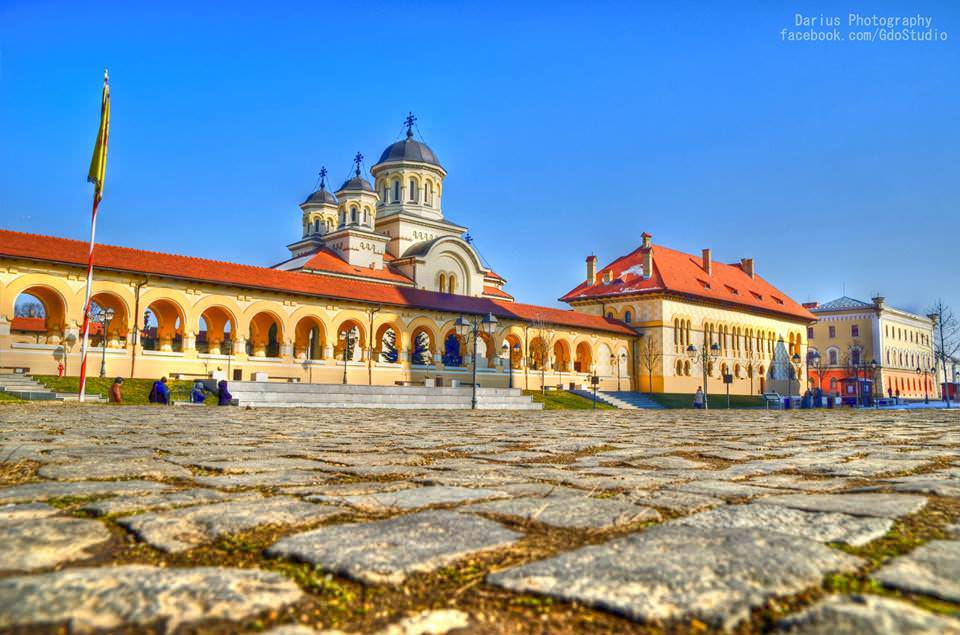
ionut
Friday 18th of March 2016
credit photography ; Ionut Vaidean
Sandor
Thursday 17th of March 2016
@ Grainos What did you smoke my dear neighbour?Remember 4 aug 1919 do you wanna repeat that experience!
Grainos
Wednesday 16th of March 2016
All in all the architecture and cultural heritage of Gyulafehérvár are solely Hungarian. All the Romanian peasants did was turning against their allies in both World Wars and securing Hungarian lsnd for themselves through treason. That's not something Romanian politics should be proud of.